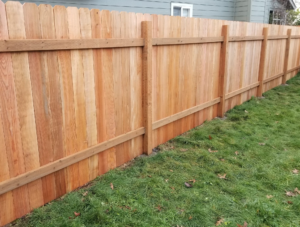Montana Roofing Contractor is a licensed professional who specializes in installing roofs. They often have relationships with manufacturers, which allows them to obtain discounted roofing materials and components.
Homeowners should avoid roofing contractors that offer to “eat” the homeowner’s insurance deductible. Also, homeowners should be wary of anyone who refuses to get a permit.

A roofing contractor is a professional who knows how to install and repair all aspects of roofs. These professionals know how to handle any unforeseen problems that may arise during the reroofing process and are able to work efficiently to complete your project on time and on budget. They also know the best materials and can offer you various options at competitive prices.
Many states and cities require roofing contractors to be licensed in their trade. Typically, these licenses will require the contractor to pass an exam and to have specific experience working on different types of roofs. You can learn more about your local licensing requirements by visiting the website of your City or state’s occupational and professional licensure department.
In Alaska, roofers are required to be licensed as Specialty Contractors. To be licensed, applicants must register with the Alaska Department of Commerce and Community Development and apply proof of completion of a state-approved construction management course and a letter from a licensed general contractor to act as their endorser. In addition, they must have at least four years of supervisory work experience as a journeyman, foreman, or supervisor.
Roofing contractors in Montana are not required to have a state license but must register their business with the State Department of Labor and Industry. They must also provide a certificate of liability insurance and maintain workers’ compensation coverage.
In Nebraska, roofing contractors are required to obtain a license from the State Department of Labor. They must provide proof of liability insurance and workers’ compensation coverage for employees, as well as register their business and pass an exam. In West Virginia, all construction contractors must be licensed by the Division of Labor, which requires them to pass a business and law exam and a trade exam.
To become a roofing contractor in Florida, you must first register your business with the Department of Business and Professional Regulation (DBPR). You will then be provided with study materials and must pass the Florida Building Code and Construction Industry Examinations. You must also carry general and workers’ compensation insurance, provide a credit report, and submit a financial statement to prove your financial stability.
Licensing
Depending on where you live and work, licensing requirements vary. Some States require contractors to obtain a license, while others defer this responsibility to local authorities. This approach offers advantages, including flexibility and adaptability. It can also enhance oversight and compliance. However, it may introduce a complexity and administrative burden for contractors who operate across multiple municipalities.
For example, in New York City, the Department of Buildings regulates roofing contractors. The City requires a contractor to pass a background check and submit proof of liability insurance before they can begin working on a project. In addition, they must pay a licensing fee that varies depending on the type of work.
In Oregon, roofers must have a State license to work on commercial and residential projects. Those seeking to acquire this license must complete pre-licensing training, have a minimum number of years in the trade, and pass the PSI exam. Once they’ve successfully passed the exam, they must obtain a Construction Contractor License or Residential Specialty Contractor License from the Department of Professional and Occupational Regulation.
Other States, such as Nevada, require that anyone who constructs, alters, or repairs any part of a building, including roofing, must be licensed. This includes roofers, general contractors, and subcontractors. Those seeking to be licensed must have at least four years of experience as a journeyman, foreman, supervisor or contractor, and submit proof of insurance and bonding.
Some localities, such as Oneida County in Upstate New York, have their own licensing requirements. Those who want to work as a roofer must submit an application, proof of liability insurance, and a state license or permit.
Licensing is a process that often involves extensive training, an apprenticeship, and testing. It can also be costly, which is why some contractors choose to avoid it altogether. But it’s important for roofers to be aware of the regulations in their area. Failing to comply with these rules can lead to fines, work stoppage, and damage to the reputation of the contractor. To avoid this, contractors should establish a routine of checking in with their local codes and standards offices, or subscribe to newsletters that keep them apprised of changes.
Insurance
Roofing contractors have unique insurance needs because of the nature of their work. They need general liability, workers’ compensation, and commercial umbrella insurance, among other policies.
Having the proper insurance for your business can help you avoid expensive litigation and other costly consequences. Insurance can also be a selling point to potential clients. Whether you’re a small business owner or an established roofing contractor, working with a licensed insurance professional can help you get the right insurance coverage for your business.
A roofing contracting business should have general liability insurance that covers property damage, bodily injury, and advertising injuries. For example, if a customer slips and falls over equipment on your business premises, or your employee is injured by flying debris during a project, this policy can pay for repairs. It can also cover legal expenses and settlement awards if you are sued for advertising or other types of injury.
You should have a workers’ compensation insurance policy that pays your employees’ medical bills and a portion of their lost wages if they are injured at work. It’s required by most states and can protect you from costly lawsuits. It can also pay for funeral costs if a worker is killed on the job.
Commercial auto insurance, also known as commercial auto or business auto insurance, provides protection for cars, trucks, vans, and trailers that you use in your roofing business. Personal auto policies typically won’t provide this coverage, so you need a separate policy. This insurance can also cover the cost of towing and rental car fees if your vehicle is damaged or stolen while on a job site.
Errors and omissions insurance, also called professional liability insurance, is an optional policy that protects your business if someone claims that you have made mistakes that caused financial loss. For example, if a client sues because your roof installation caused leaks or other damages to their building, this policy may help pay for repair costs, legal expenses, and judgment awards.
Inland marine insurance, another optional policy, protects your tools, supplies, and equipment while they’re in transit to and from the job site or between jobs. This policy can help pay for repairs, replacements, and even shipping charges if your equipment is damaged in an accident or by extreme weather.
Customer Service
It’s important to look for a roofing contractor that is committed to customer service. This will be reflected in how they answer your questions about their business and their roofing solutions, and it’s also important to ask them about workmanship warranties and product warranties. Additionally, you may want to ask about how long they’ve been in business. A longer history typically indicates a more stable and experienced business. Also, ask them if they use subcontractors or complete the work themselves.








